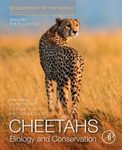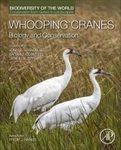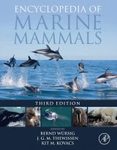About this book
Pangolins: Science and Conservation brings together experts from around the world to document the most up-to-date scientific knowledge on pangolins and their conservation. It chronicles threats facing the species, current initiatives being implemented to protect them, and looks ahead at the future of pangolin science and conservation efforts.
Led by a team of editors recognized as pangolin specialists, this book includes accounts of the species' evolution, morphology, phylogeny, and taxonomy. It discusses the role of pangolins in historically symbolic, mythological, and ritualistic practices across Africa, Asia, and Europe, and contemporary practices such as illegal international trade. Chapters in the latter portion of this book focus on the conservation, rehabilitation, and legal regulation of pangolins around the world, including current political efforts and interventions to secure the future of the species.
Pangolins: Science and Conservation is the latest volume in the Elsevier's species-specific series, Biodiversity of the World: Conservation from Genes to Landscapes. This book is a valuable resource for researchers and students in species conservation science, planning, and policymaking.
Contents
SECTION ONE - PART 1: WHAT IS A PANGOLIN? EVOLUTION, PHYLOGENY AND TAXONOMY
Overview
1. Evolution and morphology
2. Phylogeny and Systematics
SECTION ONE - PART 2: WHAT IS A PANGOLIN? BIOLOGY, ECOLOGY AND STATUS
3. The role of pangolins in ecosystems
4. Chinese pangolin Manis pentadactyla (Linnaeus, 1758)
5. Indian pangolin Manis crassicaudata (Geoffrey, 1803)
6. Sunda pangolin Manis javanica (Desmarest, 1822)
7. Philippine pangolin Manis culionensis (de Elera, 1915)
8. Black-bellied pangolin Phataginus tetradactyla (Linnaeus, 1766)
9. White-bellied pangolin Phataginus tricuspis (Rafinesque, 1820)
10. Giant pangolin Smutsia gigantea (Illiger, 1815)
11. Temminck’s pangolin Smutsia temminckii (Smuts, 1832)
SECTION TWO: CULTURAL SIGNIFICANCE, USE AND TRADE
Overview
12. Symbolism, myth and ritual in Africa and Asia
13. Early biogeographies and symbolic use in Europe in the 16th-18th centuries
14. Meat and medicine: historic and contemporary use in Asia
15. Bushmeat and beyond: historic and contemporary use in Africa
16. International trade and trafficking in pangolins, 1900–2018
SECTION THREE: CONSERVATION SOLUTIONS
Overview
Law enforcement and regulation
17. Conserving pangolins through international and national regulation and effective law enforcement
18. Combatting Illegal Pangolin Trade – A Law Enforcement Practitioner's Perspective
19. Addressing trade threats to pangolins in the Convention on International Trade in Endangered Species of Wild Fauna and Flora (CITES)
20. Understanding illegal trade in pangolins through forensics
Awareness raising and behaviour change
21. No Longer a Forgotten Species: History, Key Events, and Lessons Learnt from the Rise of Pangolin Awareness
22. Changing consumer behavior for pangolin products
Site-based protection and local community engagement
23. Engaging local communities in responses to illegal trade in pangolins: who, why and how?
24. Exploring community benefits to reduce illegal wildlife trade using a theory of change approach
25. Community conservation in Nepal – opportunities and challenges for pangolin conservation
26. The Sunda pangolin in Singapore: a multi-stakeholder approach to research and conservation
27. Holistic approaches to protecting a pangolin stronghold in Central Africa
Ex-situ conservation
28. Husbandry of pangolins: lessons and challenges
29. Veterinary health and pangolins
30. The rescue, rehabilitation and release of pangolins
31. Zoo Engagement in Pangolin Conservation: Contributions, Opportunities, Challenges, and the Way Forward
32. Evaluating the impact of pangolin farming on conservation
Conservation planning, research and finance
33. Conservation strategies and priority actions for pangolins
34. Research needs for pangolins
35. Developing robust ecological monitoring methodologies for pangolin conservation
36. Conservation planning and PHVAs in Taiwan
37. Leveraging support for pangolin conservation and the potential of innovative finance
38. Supporting pangolin conservation through conservation tourism
SECTION FOUR: THE FUTURE
39. Taking pangolin conservation to scale: the IUCN SSC Pangolin Specialist Group and the next 20 years
Customer Reviews
Biography
Daniel W.S. Challender has been active in pangolin conservation for about ten years and re-formed and currently chairs the IUCN SSC Pangolin Specialist Group. Helen Nash has been studying pangolins for the past five years with a focus on local status and urban ecology, and is Vice-Chair, Genetics for the Pangolin Specialist Group. Carly Waterman has been involved in pangolin conservation for about five years. She is currently Pangolin Technical Specialist at the Zoological Society of London and Programme Officer and Red List Coordinator for the Pangolin Specialist Group.














![Histoire Naturelle des Paresseux [Natural History of the Sloths]](http://mediacdn.nhbs.com/jackets/jackets_resizer_medium/16/163947.jpg?height=150&width=122)
















